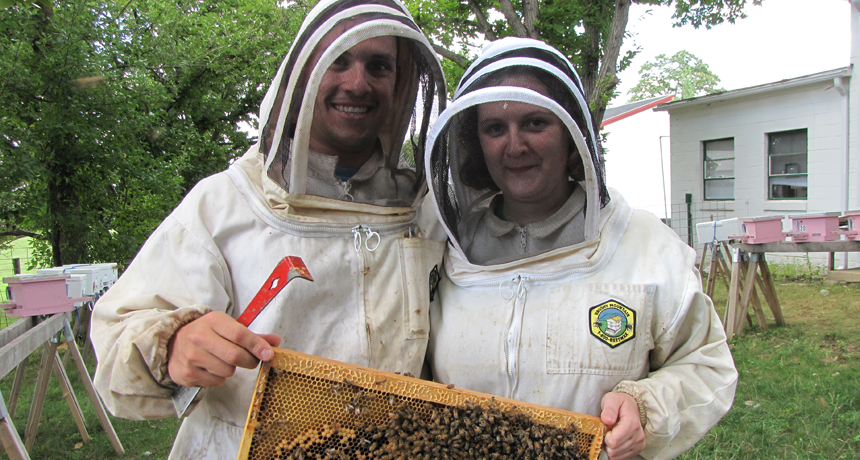Questions for ‘Cool Jobs: Abuzz for bees’

Together, Elina and Bernardo Niño study health and disease in these California honeybees.
Christina Grozinger

Together, Elina and Bernardo Niño study health and disease in these California honeybees.
Christina Grozinger
Register to access:
An error occurred. Please try again.
Already Registered? Enter your e-mail address above.